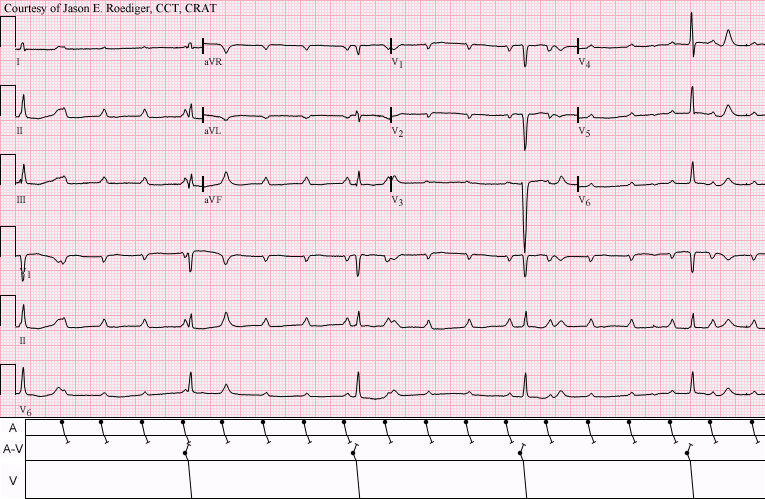
Normally, SA node will help the atria contract, producing p wave, which is followed by a qrs complex due to ventricular contraction. But, in case of third degree heart block (also called as complete heart block), the ventricles do not get impulses from SA node and start beating at a slower rate. So, the p waves and qrs complexes do not have a particular relation. P waves might have a normal heart rate and QRS will have a slower rate. This cannot be labelled as any other heart block.

If you look at the image above, the distance between two P waves will be constant (about 2 and half big boxes). Similarly, the distance between R waves will be constant (about 11 big boxes). P and R waves will have no particular association. QRS complexes are regular on ECG (similar to 1st degree and fixed ratio 2nd degree blocks.)
If an ECG appears to have irregular QRS complexes, it could be 2nd degree heart block (except fixed ratio 2nd degree).